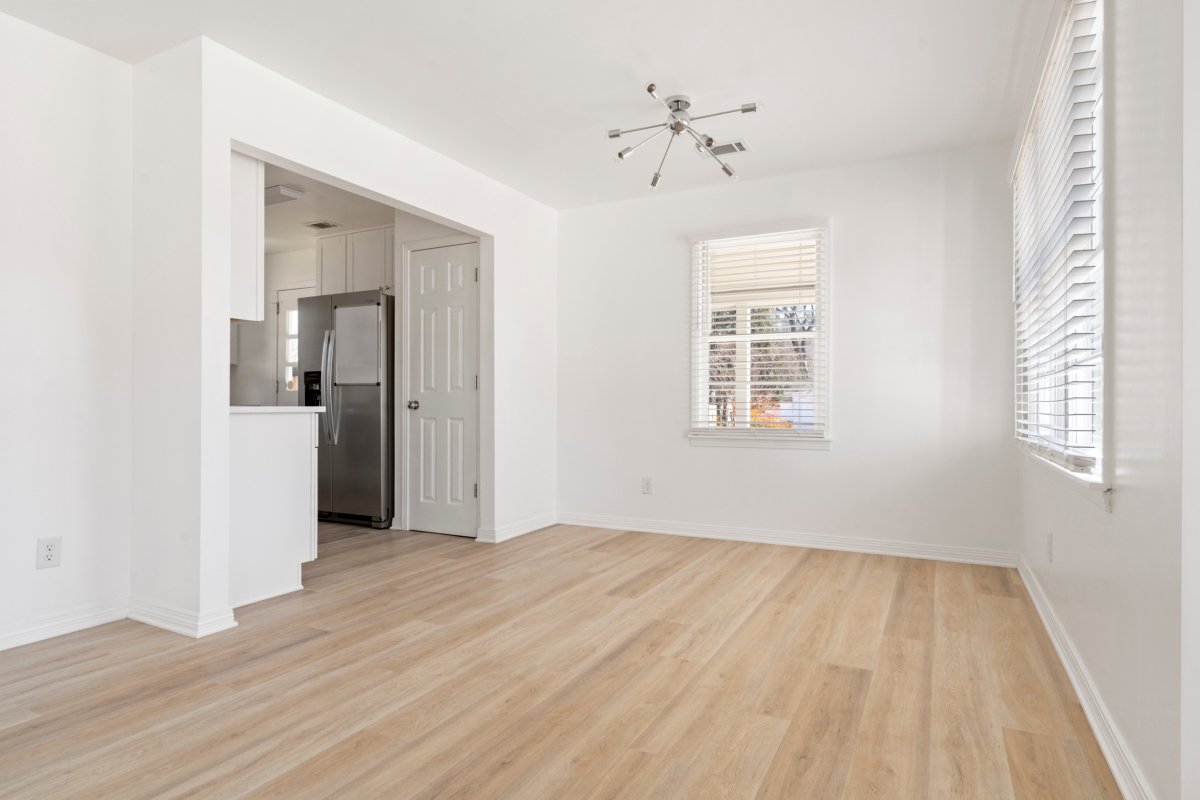
How to Create a Standout Real Estate Photography Portfolio
In the competitive world of real estate, Real Estate Photography serves as a vital tool for attracting potential buyers and presenting properties in the best light. A well-crafted portfolio showcases not just your technical skills but also your unique artistic flair—a critical component in distinguishing yourself from others in the field. In this article, we will explore how to create an exceptional real estate photography portfolio that resonates with clients, enhances your brand, and ultimately leads to more business opportunities.
Understanding the Importance of a Solid Portfolio

Real Estate Photography
Creating a standout portfolio is essential for any photographer looking to establish themselves in the real estate market. Your portfolio acts as your primary marketing tool, showcasing your abilities, style, and expertise. Below are various facets of why having a solid portfolio is crucial.
The Power of First Impressions
In the realm of real estate photography, first impressions matter immensely.
A potential client often decides whether or not to work with you based on the initial impact of your portfolio. This means that every image you choose to showcase should reflect your best work.
When curating a selection of photographs, high-quality images that exhibit attention to detail can effectively communicate your capability to capture the unique features of any property. By consistently delivering high-caliber images, you set the groundwork for a positive relationship with prospective buyers.
Establishing Credibility and Trust
Your portfolio does more than just display images; it communicates your professional standing within the industry.
A well-rounded collection that includes various property types—such as residential homes, commercial buildings, and luxury estates—demonstrates versatility and adaptability.
By presenting a diverse range of properties, you convey that you can cater to different client needs, thus building credibility. Potential clients are far more likely to trust a photographer who displays proficiency across various styles and settings.
Showcasing Personal Style
The beauty of Real Estate Photography lies not only in the technical aspects but also in the photographer’s artistic vision.
Your portfolio is a canvas where you can express your personal style, which can make you stand out in a saturated market.
Whether you prefer bold contrasts or soft lighting, warm tones or cool hues, your photographic style should shine through each image. As you develop your portfolio, think about how your unique perspective can enhance the viewer’s experience and help them see the potential of a space.
Selecting the Right Images for Your Portfolio
Choosing the right images to include in your portfolio is a meticulous process that requires thoughtful consideration.
It’s crucial to curate a collection that highlights your strengths while also aligning with the expectations of your target audience.
A well-balanced selection can create a narrative that speaks directly to potential clients, showcasing not just your skills but also your understanding of the real estate market.
Quality Over Quantity
When assembling your portfolio, remember that quality trumps quantity.
Instead of including every image you’ve ever taken, select those that truly exemplify your capabilities.
Aim for a cohesive collection of 15-20 photographs that represent your finest work. This curated approach not only makes your portfolio easier to digest but also allows you to showcase a specific focus, such as luxurious homes or modern apartments.
Diversity in Property Types
While establishing a clear brand identity is important, showcasing a variety of property types can broaden your appeal.
Including photographs of different styles—like urban lofts, suburban homes, and rural estates—can attract a wider clientele.
This diversity signifies flexibility and the ability to adapt to various environments, giving potential clients confidence in your skills. Moreover, consider incorporating images that capture the essence of different architectural designs, offering a richer context for your portfolio.
Highlighting Unique Features
Every property has its unique charm, and it’s imperative to highlight these elements within your portfolio.
Look for distinctive features such as grand staircases, expansive gardens, or cozy nooks that tell a story about the property.
These elements can engage viewers and draw them into the images, making them feel more connected to the space. When selecting photos, ensure you include a few close-ups that capture intricate details as well.
Developing a Consistent Editing Style

real estate photography
Editing plays a crucial role in shaping the visual narrative of your portfolio.
A consistent editing style not only enhances the overall aesthetic but also reinforces your brand identity.
As you refine your editing techniques, keep in mind how color grading, contrast adjustments, and cropping decisions can elevate your images and maintain a cohesive look throughout your portfolio.
Color Grading for Harmony
Color grading involves adjusting colors to create a particular mood or tone.
In Real Estate Photography, achieving harmonious colors can significantly impact how a space feels to the viewer.
For instance, warm tones can evoke feelings of comfort and warmth, making a home seem inviting. Conversely, cooler tones might create a more modern, sleek ambiance. Choose a color palette that aligns with your artistic vision and stick to it throughout your portfolio for uniformity.
Contrast and Clarity
Adjusting contrast and clarity can breathe life into your images.
High contrast can add drama and depth, especially in spaces where natural lighting plays a significant role.
On the other hand, softer contrasts may be more appropriate for lighter, airy spaces, creating an inviting atmosphere. Be sure to experiment with these elements but tread carefully; over-editing can lead to unnatural-looking images that detract from the property’s true essence.
Cropping with Intent
Cropping is another powerful editing tool that can refine the composition of your photographs.
By thoughtfully framing your shots, you can emphasize focal points and eliminate distractions.
Make sure to crop images in a way that highlights the property’s features while remaining mindful of the overall balance. Sometimes, even slight adjustments can make a substantial difference in how the final image appears.
Organizing Your Portfolio Effectively
An organized portfolio not only enhances viewer experience but also reinforces your professionalism.
The layout and structure of your portfolio can shape perceptions and influence how easily potential clients navigate your work.
Categorizing by Property Type
One effective way to organize your portfolio is by categorizing images based on property type.
Creating separate sections for residential, commercial, and luxury properties can help viewers quickly find what interests them.
This classification provides a straightforward experience for clients, allowing them to focus on the styles that resonate with their needs without sifting through unrelated images.
Thematic Grouping
In addition to categorization, thematic grouping can offer a fresh perspective on your work.
Consider organizing images around specific themes, like outdoor spaces, interior design, or staging concepts.
This approach creates a storyline within your portfolio, guiding viewers through a visual journey that emphasizes your expertise in various niches of Real Estate Photography.
User-Friendly Presentation
The presentation of your portfolio matters just as much as the content itself.
Whether you choose a digital format or a physical album, ensure that the layout is clean and easy to navigate.
In a digital portfolio, use simple navigation tools and avoid clutter. For physical portfolios, opt for high-quality prints and materials that speak to your professionalism.
Promoting Your Portfolio
Creating your portfolio is just the beginning; promoting it effectively is equally essential.
Utilizing various platforms and strategies can increase visibility and attract potential clients, thus enhancing your business prospects.
Leveraging Social Media
Social media is a powerful tool for sharing your work and connecting with potential clients.
Platforms like Instagram and Pinterest allow you to showcase stunning visuals, captivating a larger audience interested in real estate.
Use relevant hashtags associated with Real Estate Photography, engage with followers, and share behind-the-scenes insights into your process. Creating stories or posts that interact with your audience can build community and increase interest in your services.
Building a Professional Website
Having a dedicated website is fundamental in today’s digital landscape.
A professional website offers a centralized hub for showcasing your portfolio, providing potential clients with easy access to your work and services.
Ensure your website is visually appealing, mobile-friendly, and optimized for search engines. Consider including testimonials, a blog featuring tips or neighborhood insights, and contact information to encourage inquiries.
Networking with Real Estate Agents
Building relationships with real estate agents can be a goldmine for generating leads.
By networking and collaborating with agents, you can gain exposure to their listings and clients.
Offer to provide your services at open houses or collaborate on promotional materials, showcasing your skills while expanding your reach within the industry.
Conclusion
Creating a standout real estate photography portfolio is a multifaceted endeavor that combines technical skill, artistic vision, and strategic promotion. By understanding the importance of a solid portfolio, selecting the right images, developing a consistent editing style, organizing effectively, and promoting your work, you can position yourself as a sought-after photographer in the real estate market.
Remember that your portfolio is not just a collection of images; it’s a reflection of your brand and an invitation for potential clients to envision their properties through your lens. Dedicate time and effort to crafting a compelling portfolio, and you’ll reap the rewards of success in your real estate photography endeavors.
Contact me for the best real estate photo and video editing service.






